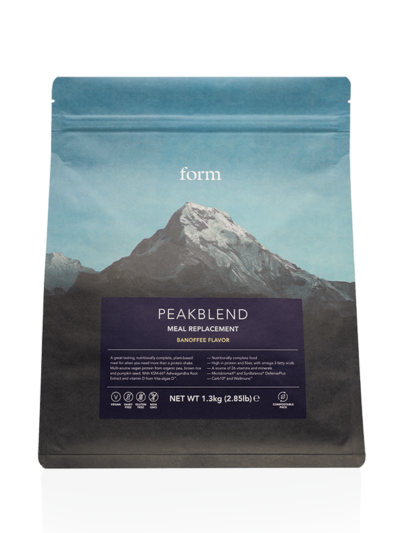Why Sun Salutations Are The Perfect Yoga Poses For Beginners

It’s crazy to think that just a few decades ago, yoga as a practice was still trickling into the consciousness of western culture. By 2008 though, 15 million people in the US alone regularly participated in some form of yoga, and that number has risen further to an estimated 55 million people in 2020.
That’s a massive percentage of the population, but it still leaves a few unconverted. If you’re one of those few then this current period of social distancing and lockdown is as good a time as any to dip your toes into a warrior pose.
“Yoga is the perfect at-home movement practice, because you don’t need anything to get started,” says yoga teacher, Chris Magee. “It can be performed with little space, even without a mat provided your floor isn’t too hard or slippery, and there are so many different options and styles. There is truly something for everybody, no matter your experience level or mood.”
So to help you beginners out while you’re stuck at home we’ve put a guide to starting out, including two sequences of yoga poses known as Sun Salutations that Magee recommends as a great starter for newbies.

The Benefits Of Yoga For Beginners
Beyond the fact, everyone else is doing it and it’s easy to do at home, why else should we start channeling our inner yogis. Well, as we’re spending most of our days idle, we require a little something extra to keep our bodies awake.
“Being stuck indoors has probably drastically reduced our daily movements, and as a result, our bodies may be starting to feel stiff or sore,” notes Magee. “Yoga is the perfect way to reawaken and open up the body to keep us feeling good. Not to mention the mental benefits we get from carving out time to be present and work on our practice. The headspace we create has a wonderful ripple effect into everything else that’s happening in our lives.”
Science is also a big believer in the benefits of yoga. A study from the University of South Australia, found that after 10 weeks of yoga the 131 people studied had significantly reduced their stress and anxiety levels. Another study from the University of Pennsylvania School of Medicine, showed that yoga could help decrease pain and improve physical function in those with osteoarthritis, while research from 2003 found that participants over 40 years of age who practiced yoga had lower blood pressure than those who didn’t.
And if you’re already an active person, a regular yoga session can have a big impact on your athletic ability. A 2016 study, found that the practice significantly increased the flexibility and balance of male college athletes, compared to the control group (this article goes into the subject of yoga and athletic performance in more detail).

The Sun Salutations Starter Kit
As previously mentioned, the best place for beginners to start is the Sun Salutations. “This is a collective term for a little sequence of movements that can be found in one form or another in most vinyasa (breath lead, flowing) classes,” Magee explains. When you practice these Sun Salutations, you inhale to extend and exhale to bend. That focus on your breath is really important in order to achieve all those beautiful mental benefits.
“These sequences can be repeated as many times as you like, to build heat and increase fluidity and strength in the body. There are plenty of ways to modify and they are very easy to search for online, offering pose charts to follow or videos guiding these movements. If you are struggling for answers to your questions please reach out to me and I’m always happy to help if I can.”
For a quick 15-minute yoga workout for beginners, Magee would recommend three rounds of the Sun Salutations A sequence followed by three rounds of B. “It’s a great 10 to 15-minute practice for beginners to do every day to start to building their familiarity with the yoga practice and the connection to their breath.”
Sun Salutation A
- Mountain Pose: Standing with your feet together, ground evenly through the feet and lift up through the crown of your head.
- Upward Hand Pose: Inhale and raise your arms upwards above your head joining the palms, while lifting the head up to gaze upwards.
- Forward Fold: Exhale as you fold forward from the hips. Bend your knees if necessary. Rest your hands beside your feet and bring your nose to your knees
- Half Fold: Inhale as you lift your torso halfway, lengthening your spine so your back is flat. Keep your fingertips on the floor, or bring them to your shins.
- Chaturanga: Exhale as you step back into a plank, with your hands under your shoulders and feet hip-distance apart. Continue exhaling as you lower your body toward the floor. Keep your elbows tucked in toward your sides and your legs straight while reaching back through your heels.
- Upward Facing Dog: Inhale as you draw your chest forward and straighten your arms. Draw your shoulders back and lift your heart to the sky. Press through the tops of your feet, lifting your thighs off the floor and fully engaging your leg muscles. Keep your elbows tucked in toward your sides.
- Downward Facing Dog: Exhale as you lift your hips and roll over your toes, placing the soles of your feet on the floor. Your heels do not need to touch the ground. Ground down through your hands and the soles of your feet as you lengthen your spine. Lift your belly toward the sky. Stay here for five breaths. On your last exhalation, bend your knees and look between your hands.
- Half Fold: Inhale as you step or jump both feet between your hands. Lift your torso halfway, lengthening your spine forward so your back is flat. Your torso should be parallel to the floor. Keep your fingertips on the floor, or bring them to your shins.
- Forward Fold: Exhale as you fold your torso over your thighs and back into Forward Fold.
- Upward Hand Pose: Inhale as you sweep your arms out to the side and extend up once again. Gently arch your back and gaze toward the sky.
- Mountain Pose: Exhale as you come back into Mountain Pose. Bring your hands into prayer position. Repeat the sequence two or more times.

Sun Salutation B
- Mountain Pose: Stand with your feet together. Press your palms together in prayer position. Rest your thumbs on your sternum and take several breaths.
- Chair Pose: Inhale as you bend your knees and lower your hips as if you’re sitting back in a chair. At the same time, extend your arms straight overhead and reach through your fingertips.
- Forward Fold: Exhale as you fold forward from the hips. Keep your knees bent if your hamstrings are tight. Otherwise, slowly straighten your legs. Rest your hands beside your feet and bring your nose to your knees
- Half Fold: Inhale as you lift your torso halfway, lengthening your spine forward so your back is flat. Your torso should be parallel to the floor. Keep your fingertips on the floor, or bring them to your shins.
- Chaturanga: Exhale as you step or jump back into a plank, with your hands under your shoulders and feet hip-distance apart. Continue exhaling as you lower your body toward the floor. Keep your elbows tucked in toward your sides. If needed, come to your knees for Half Chaturanga. Otherwise, keep your legs straight and reach back through your heels.
- Upward Facing Dog: Inhale as you draw your chest forward and straighten your arms. Draw your shoulders back and lift your heart to the sky. Press through the tops of your feet, lifting your thighs off the floor and fully engaging your leg muscles. Keep your elbows tucked into your sides.
- Downward Facing Dog: Exhale as you lift your hips and roll over your toes, placing the soles of your feet on the floor. Your heels do not need to touch the ground. Ground down through your hands and the soles of your feet as you lengthen your spine. Lift your belly and sit bones to the sky.
- Warrior 1/High Lunge Right Leg Forward: Inhale as you step your right foot between your hands and bring your left heel to the ground. Bend your front knee while keeping your back leg straight. Raise your arms straight overhead and gaze to the sky.
- Chaturanga: Exhale as you bring your hands to the mat and step your right foot back into the Chaturanga.
- Upward Facing Dog: Inhale as you move back into Upward Facing Dog.
- Downward Facing Dog: Exhale as you lift your hips into Downward Facing Dog.
- Warrior 1/High Lunge Right Leg Forward: Inhale as you step your left foot between your hands and bring your right heel to the ground. Bend your front knee while keeping your back leg straight. Raise your arms straight overhead and gaze to the sky.
- Chaturanga: Exhale as you move back into a Chaturanga.
- Upward Facing Dog: Inhale as you draw your chest forward and move back into Upward Facing Dog.
- Downward Facing Dog: Exhale as you move back into Downward Dog. Hold this third Downward-Facing Dog for five breaths. On your last exhalation, bend your knees and gaze between your hands.
- Half Fold: Inhale as you step or jump forward, landing your feet between your hands. Lift your torso halfway, lengthening your spine forward so your back is flat. Your torso should be parallel to the floor. Keep your fingertips on the floor, or bring them to your shins.
- Forward Fold: Exhale as you fold your torso over your thighs. Bend your knees if necessary. Rest your hands beside your feet and bring your nose to your knees.
- Chair Pose: Inhale as you come back into Chair Pose.
- Mountain Pose: Exhale as you come back into Mountain Pose.
Chris Magee is the co-founder of Empowered Yoga School and head of yoga at Psycle London. You can also catch Magee over on the Fiit app where he teaches a range of virtual yoga classes.


















